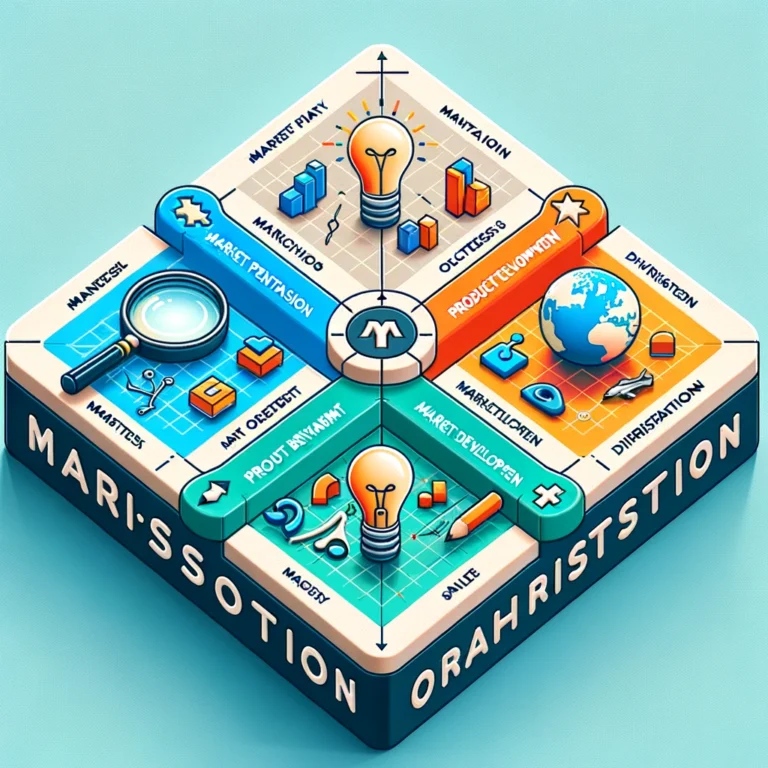Market penetration: selling an existing product in an existing market, with the aim of increasing the market share of said product (e.g., promotions).
Product development: changing or creating new products for the same market.
Market development: selling the same products to a new market.
Diversification: selling new products to new markets.

The Ansoff Matrix is a strategic tool used in business growth strategy planning, providing a framework for analyzing and planning a company’s strategies for growth through existing or new products in existing or new markets. This matrix outlines four strategies: Market Penetration, Product Development, Market Development, and Diversification. Each strategy has its risks and benefits and is suitable under different circumstances. Understanding these strategies, along with real-world examples, is crucial for IB Business & Management students to comprehend how companies navigate their growth paths. This analysis explores each quadrant of the Ansoff Matrix in detail, illustrating their application with industry examples.
Market Penetration
Definition: Market Penetration involves selling more of the existing products to the current market segments. The aim is to increase the company’s market share within those segments. This can be achieved through competitive pricing strategies, marketing campaigns, improving product quality, or customer service.
Example: Coca-Cola frequently employs market penetration strategies, using aggressive marketing and promotions to increase its share in the soft drink market. By introducing various sizes of bottles and cans at competitive prices and extensive advertising campaigns, Coca-Cola aims to attract more consumers within existing markets.
Product Development
Definition: Product Development entails introducing new products or variations to the existing market. This strategy leverages the company’s understanding of its current customers to meet their evolving needs or to offer something innovative that provides a competitive edge.
Example: Apple excels in product development, consistently introducing new or improved products such as the iPhone, iPad, and Apple Watch. Each product iteration offers new features or capabilities that appeal to existing Apple customers, encouraging upgrades within the Apple ecosystem.
Market Development
Definition: Market Development involves selling existing products to new markets. This could mean expanding into new geographical areas, targeting new segments, or finding new uses for the product. It requires an understanding of the new market’s needs and preferences.
Example: Netflix’s expansion into international markets is a classic example of market development. By extending its streaming services globally, Netflix tapped into new geographical markets beyond the US, adjusting its content library to cater to local tastes and preferences in over 190 countries.
Diversification
Definition: Diversification is the strategy of entering new markets with new products. It is the most risky of the four strategies as it requires dealing with unfamiliar products and markets. Diversification can be related, where the new business shares some connection with the existing operations, or unrelated, where there is no significant connection.
Example: Amazon’s move from an online bookstore to a global e-commerce platform and provider of cloud services (AWS), and its creation of consumer electronics like Kindle and Echo, demonstrates diversification. Amazon ventured into new product categories and markets, significantly broadening its business model beyond its original scope.
Conclusion
The Ansoff Matrix presents a strategic framework for businesses contemplating growth strategies. By evaluating the risks and opportunities associated with market penetration, product development, market development, and diversification, companies can make informed decisions about their expansion paths. Real-world examples from Coca-Cola, Apple, Netflix, and Amazon illustrate the application of these strategies, showcasing how businesses can achieve growth by carefully selecting and implementing the right strategy based on their market understanding, competencies, and resources. For IB Business & Management students, mastering the Ansoff Matrix and its applications offers valuable insights into strategic planning and decision-making in the business world.






